From this article you will learn how to drink vermouth correctly. To begin with, vermouth is a regular fortified wine that is flavored with a number of herbs (including wormwood). The topic, frankly speaking, is relevant, since most Russians - and many people in other countries - associate vermouth with a low-quality product. And this is not surprising, because during the USSR, when “777” and “Stolichnaya” were already very tired, people began to use vermouths made from wines of dubious quality. These wines must have had at least some use!
Some, on the contrary, are sure that vermouth is a glamorous drink, an attribute of people from high society, which is drunk from a cone-shaped glass decorated with various bartender decorative elements. So, today we intend to debunk all the myths and misconceptions, and also tell our readers how to drink vermouth correctly.
Some consider vermouth to be a low-quality drink, others are sure that it is an attribute of representatives of high society
Brief information about the drink
European vermouth producers pay great attention to the production process itself, and all the herbs included in its composition are carefully selected. Modern vermouth from Italy is far from the same “potion” that was consumed by citizens of the Union. The Italians have noticeably succeeded in producing this alcoholic drink and even took a leading place, “launching” the rumor that vermouth was allegedly created by Hippocrates himself.
On a note! A fairly true legend about this actually exists. It says that Hippocrates once pondered questions of universal importance while in nature. On one side of the philosopher there were vineyards, on the other, fragrant healing herbs. Beauty!
As a result, Hippocrates decided to drink alcohol and get medical treatment, although it seems that it was mainly the plant that grew next to the philosopher. Be that as it may, since then a rumor began to spread that vermouth was invented by Hippocrates. However, we will talk about the healing properties of the drink a little later.
 There is a version that the creator of vermouth was the famous philosopher Hippocrates
There is a version that the creator of vermouth was the famous philosopher Hippocrates If you're looking for a drink to serve to your dinner guests, then vermouth is definitely not the answer.. The fact is that it may well spoil the taste of food, which is why it is consumed either after a meal or as an aperitif to stimulate digestive system. By the way, it is because of this that vermouth is called an all day drink, i.e. a drink that can be drunk throughout the day. Fans of the “green snake” have already rejoiced, but we have to disappoint them: in most cases, this alcohol is not advisable to drink, especially for beginners.
Video - What is vermouth made from?
Vermouth drinking culture
Of course, if you drink constantly this drink V pure form, then you will soon get bored with it, which is why people have come up with about 500 different cocktails based on it. Most of them are extremely simple; many recipes do not even require the use of a shaker.
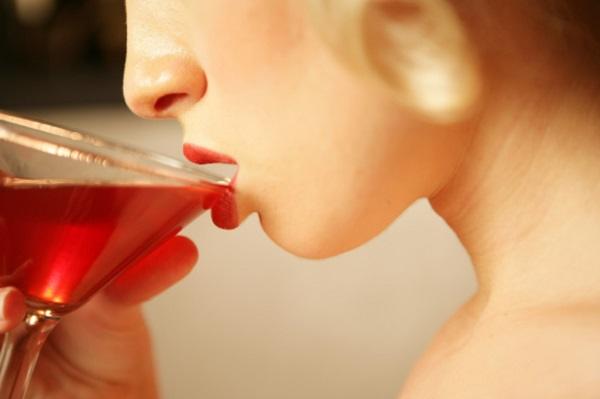 There are many ways to drink vermouth
There are many ways to drink vermouth So, let's get acquainted with the basic rules for drinking vermouth, which are suitable for all types of drink (more on this a little later).
- Vermouth, as noted earlier, is best drunk before or after meals (this alcohol is an excellent appetite stimulant).
- If we are talking about sweet vermouth, then it can be mixed with lemon juice (recommended ratio is 1:1).
- If desired, it can be combined with other drinks, including alcoholic ones - cognac, for example, or vodka. The proportions in this case should be either 1:1 or 1:2 (the second is vermouth).
- Dry varieties, as a rule, are not mixed with other drinks, but are drunk in their pure form and always chilled.
- To be consumed in its pure form, use whiskey glasses or special cocktail glasses. You should drink in small sips, but not in one gulp. The temperature of the drink should vary between 7-12 degrees.
- If you are wondering how to drink Bianco vermouth correctly, we will answer: diluting it with soda or tonic, which helps balance the taste. Also note that red varieties are often drunk with ice.
- Salted almonds are ideal for snacking, roasted peanuts, fruits or olives.
Regardless of the specific manufacturer (be it Salvatore, Martini, Delacy or Cinzano), all vermouths are conventionally divided into several groups, each of which requires its own approach.

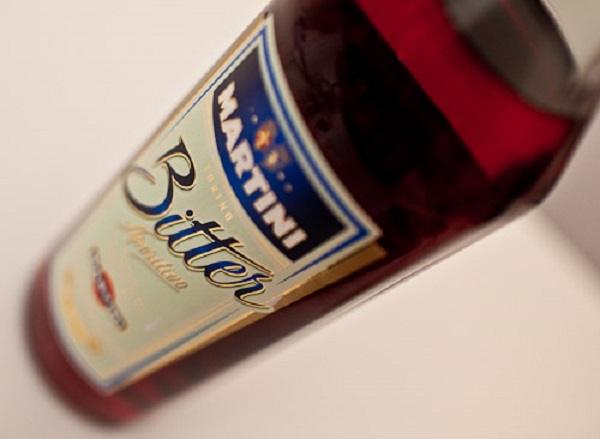
On a note! Often it is dessert vermouths that are mixed with other alcoholic drinks- cognac, vodka, sometimes even gin, etc. Alternatively, they can be diluted soft drinks(citrus juice, sprite, soda).
What conclusions can be drawn? It is preferable to drink vermouth in its pure form, but there are many effective ways make alcohol more “loyal”. It can be mixed with both alcoholic and non-alcoholic drinks, and the optimal appetizers depend on the specific type of vermouth.
How to drink vermouth Martini?
Martini is the most famous vermouth manufacturer, producing 9 various types drink And Martini Bianco is perhaps the most aromatic and delicate of them. It is quite popular and many cocktails are made from it. How to drink it? There are no specific requirements, since a lot depends on the mood, occasion and personal preferences.
 Vermouth Martini
Vermouth Martini Additional ingredients in most cases are:
- lemon wedges(you just need to put them in a glass);
- strong alcohol(the previously mentioned gin, vodka, etc.); here it is also added not a large number of liqueur, otherwise the bitterness of alcohol will simply ruin the taste picture;
- berries, fruits(alcohol in this case is cooled with ice cubes);
- juices– they help to reveal the taste more fully.
This is not a complete list possible options. There are several dozen ways to use Bianco, so you can choose the one that suits you best.
How to drink Delacy vermouth?
This is a Russian-made drink that costs less than its more famous competitors. Its quality is quite tolerable; Delasi goes well with juices and fruits. But to highlight the taste of alcohol, it is advisable to use peach, orange, grapefruit or apple. Mixing with cranberry juice, and in this case a sprig of mint can serve as a decoration.

How to drink Spanish Salvatore vermouth?
Salvatore can be of several types, and what to drink this or that vermouth with depends on whether it is dry, red, pink or bitter (see one of the previous paragraphs). You can also prepare an original cocktail consisting of:
- actually, vermouth (1 part); Vermouth Salvatore
In one gulp or in small sips?
The answer is simple and quite expected: vermouth should be drunk only in small sips. You may argue that this is the recommended way to drink all drinks, but in in this case everything is explained not only by aesthetic standards, but also by physiological characteristics human body. All fortified wines (and vermouth is one of them) are quite heavy products and affect each person differently. Moreover, if you drink too much vermouth in the evening, the next morning will not be good at all - terrible migraines and headaches are guaranteed. Neither “medicinal” hundred grams nor tablets will help with this.
As a conclusion. About medicinal properties
As we promised at the beginning of the article, we will briefly consider medicinal properties, which vermouth has. So, this drink is often used as an antiseptic; it helps improve digestion and appetite. It is sometimes used in tandem with other medications to treat a number of digestive system conditions.
On a note! In Moldova, by the way, there is even a recipe for how to drink the described alcohol when you have the flu or a cold: you need to heat it to 80 degrees, gradually adding honey during heating; Then the resulting mixture is cooled and taken 3 tbsp. spoons three times a day.
This mixture is also said to be great for morning hangovers. In a word, vermouth lifts your spirits and heals when necessary. That's all, enjoy your tasting! And don’t forget – you need to use it in moderation!
Video - Drinking Martini correctly
Vermouth is a fortified wine flavored with spicy and medicinal herbs. This drink has a thousand-year history, because Hippocrates was involved in the development of its recipe. For a long time he was perceived as medicine, and only in the 17th-18th centuries did it change its “status”. The European aristocracy fell in love with alcohol, making it an indispensable attribute of social parties.
Little has changed since then: it is customary to drink vermouth at fashionable parties and receptions. It is associated with beauty, luxury, and a pleasant pastime. Light snacks are served with alcohol, and sometimes a small amount of ice is added to the glass.
What is vermouth?
Three components of the “secular” drink can be distinguished:
- young wine - white varieties are most often used;
- bouquet of herbs (alpine wormwood, black elderberry, mint, cinnamon, cardamom, nutmeg etc.);
- alcohol - herbs are infused with it, it helps increase the strength of the alcohol.
Initially, it was customary to drink vermouth in medical purposes, however, already in the 17th-18th centuries it became the favorite alcohol of the European aristocracy. During this period, its recipe was improved, and two leading countries in its production emerged: Italy and France.
Today, vermouth is made from both white and red grape varieties. Depending on the strength and sugar content, they are divided into several types:
- Dry – contains no more than 4% sugar;
- Bianco (white) – level of “sweetness” 10-15%;
- Rosso – red alcohol with a sugar content of more than 15%;
- Rose – pink vermouth, 10-15% sugar;
- Bitter is a bitter drink with a high strength.
Today there are a large number of different brands of fortified wine. The most famous are Martini and Cinzano, interesting new products are Delasy and Salvatore. They all have a similar culture of use.
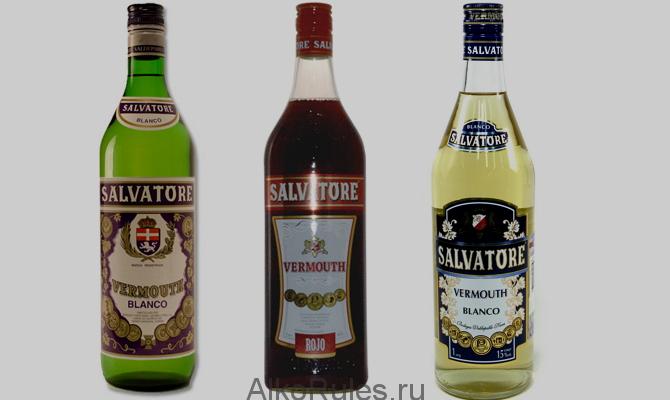
How to drink fortified wine correctly
There are several rules of use that are true for vermouths of any type:
- Fortified wines stimulate the appetite, so it is customary to drink them before or after meals.
- Spicy alcohol in its pure form is served in cone-shaped glasses - “martins” or in whiskey glasses. They drink it not in one gulp, but slowly, savoring every sip.
- Vermouth can be diluted with a soft drink, the optimal ratio is 1:1 or 1:2. It goes well with citrus juices, lemonades, soda and tonics. It can also be connected to strong alcohol: cognac, vodka or gin. An exception to this rule is dry varieties of the drink; they are usually drunk in their pure form, without mixing with anything.
- Serve light snacks with fortified wine that will help better reveal its bouquet: fruits, nuts, young cheeses, crackers, olives.
- Serve the drink chilled to a temperature of 8-12 degrees. It is better to open the bottle in advance so that the fortified wine has time to “breathe.”
Observe general rules, but change the pitch for different types alcohol to highlight their delicate taste. For example, a white Bianco drink will pair well with tonic or soda, which will balance out its sweetness. Rose vermouth is recommended to be drunk with lemon juice to fully appreciate its bouquet.
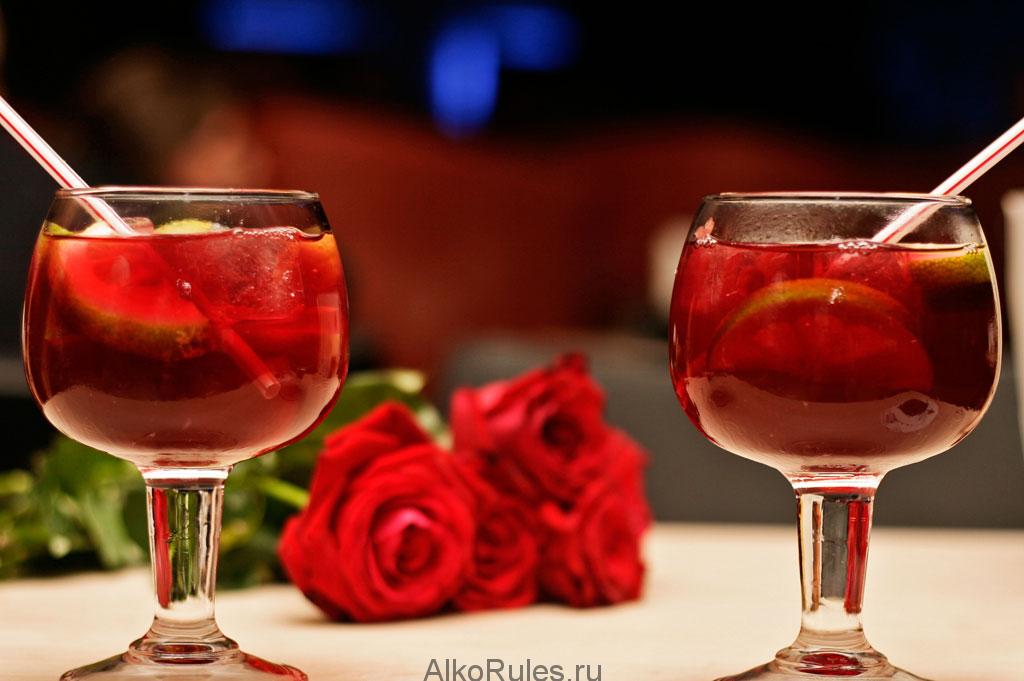
Red fortified wine is not chilled before serving. It goes well with tonic and strong drinks, for example, gin. It is often used to prepare cocktails; famous mixes such as Negroni, Manhattan and Americano are created on its basis.
Strong Bitter is usually drunk before meals to improve appetite. It is not customary to mix it with soft drinks, and in this case a snack is not required.
The most popular brands: Martini, Delasy, Cinzano
The most “native” vermouth for domestic consumers is Bianco. This type of alcohol is offered to us in different versions by the brands Delacy, Martini, Cinzano and other lesser-known brands. Ladies especially like it, while rich Rosso with its characteristic bitterness is better suited for the stronger sex.
White fortified wine has a significant sweetness, which many people do not like. To remove the cloying and characteristic spicy aroma, add a few pieces of ice to the drink: they will “take away” the excess taste, making the alcohol more delicate.
Bianco vermouths are often diluted with tonics, citrus juices and even plain water. The combination will be sweeter if you mix alcohol with Sprite or Fanta in a 1:1 ratio. If you are going to drink alcohol in its pure form, great snack It will go with an orange slice.
Recognized leaders in the production of whites are Italy and France. However, today other countries are catching up with them. Thus, domestic consumers are familiar with the Delasy brand, a joint project between Russia and Spain. She's different spicy taste and a very pleasant aroma.
Delasy produces high quality red and white vermouths. They have already been appreciated by many lovers of alcoholic beverages, who drink them in their pure form, as well as in cocktails. If you are going to try this alcohol for the first time, add ice to it: this will help you better develop its taste.

Delasy, like any other, take small sips, slowly and savoring it. This rule is determined not only by the norms of social etiquette, but also by the characteristics of our body. Fortified wine is a difficult product to digest, and drinking a large amount in the evening can mean a painful headache in the morning, which painkillers can hardly cope with.
Of course, if you drink vermouth too often, you will quickly get tired of it. Therefore, a large number of cocktails have been invented based on this fortified wine, many of which are prepared even without the use of a shaker. This makes spicy wine an integral element of both friendly and social parties.
Mixologists around the world give advice on how to drink spicy alcohol correctly. Listen to their recommendations, but be sure to find yours own way, because any wine, even fortified, should bring pleasure.
There is no single rule for the consumption of alcoholic beverages. Each of them is individual and has certain properties and qualities unique to it. Take vermouth, for example.
What is vermouth?
This wine is usually fortified, which contains the spicy aroma of various plants. There are legends that they first heard about it back in the 5th century BC. Initially, it was customary to make it from white grape varieties. But later this drink was mastered from red and pink varieties. Depending on the strength, dessert vermouth (16%) and strong vermouth (18%) are distinguished. In addition, vermouths can be divided into sweet and dry. It all depends on the production method. Moreover, dry varieties are usually only white, while sweet varieties can also be red. Many aromatic impurities are added to this wine. medicinal plants, which make it a real tonic and restorative. The main additional component of vermouth is wormwood. Its percentage in the composition of the flavor of plant origin reaches 50%. The remaining ingredients, in descending order, include yarrow, mint, cinnamon, black elderberry, nutmeg, St. John's wort, tansy, rosemary and many others. In total, several dozen herbs are used in the production of vermouth. Having an idea of the composition, you can really think about what to drink vermouth with?
Basic drinking rules
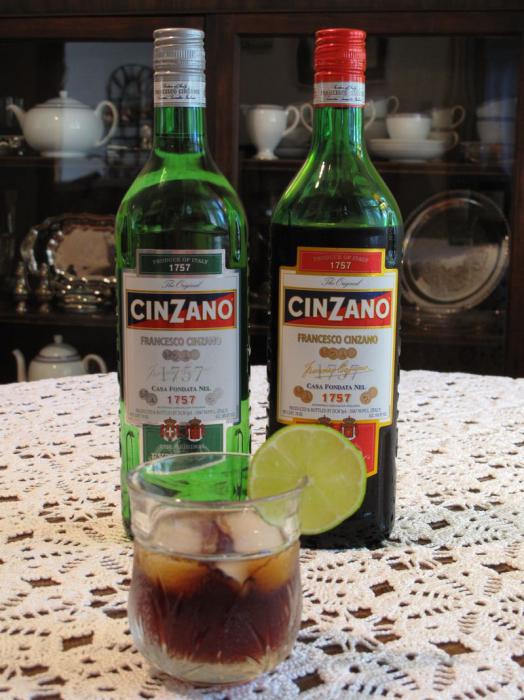
Before answering this question, it is necessary to clarify how this wine should be drunk. Vermouth is usually drunk from a special whiskey glass or triangular cocktail glass. It is customary to take the drink in small sips, slowly savoring it. This method of consumption allows you to prolong pleasure and stretch out the time of enjoyment. extraordinary taste. This drink is perfect for a good conversation in a pleasant company. Now you can think about what to drink vermouth with. Many people prefer to drink this wine in its pure form. This way the aroma is felt better, you can feel the taste of each component. The astringency of some herbs and the tenderness of others together create a unique harmony of taste. But there are people who answer the question “what to drink vermouth with” differently. Some people prefer to add a little to their glass lemon juice or a small slice of orange. This drink helps improve appetite. This may be why it is usually drunk before or during meals. There is another fairly common option for what to drink vermouth with. This wine goes well with vodka, gin or cognac. As a result of mixing, the aroma of the wine becomes even brighter, and the cocktail acquires a rich, rich taste. It’s better to have a snack like this fresh fruit, cheese or roasted nuts.
How to drink "Bianco"
All vermouths are divided into five categories:
- dry (“Secco”) with a sugar content of no more than 4%;
- white (“Bianco”), which contains 10-15% sugar;
- red (“Rosso”), where sugar is more than 15%;
- pink (“Rose”), which contains sugar in the same amount as red and white;
- bitter (“Bitter”).
 France and Italy are considered the main producers of vermouth in the world. Among Italian vermouths In our country, the most famous is Martini. It comes in nine different types. More delicate and aromatic, perhaps, is Martini Bianco. It is very popular, and bartenders often use it to prepare various cocktails. So, what do you drink Bianco vermouth with? There are several answers to this question. It all depends on the occasion, mood and taste preferences. Mainly as additional ingredients use:
France and Italy are considered the main producers of vermouth in the world. Among Italian vermouths In our country, the most famous is Martini. It comes in nine different types. More delicate and aromatic, perhaps, is Martini Bianco. It is very popular, and bartenders often use it to prepare various cocktails. So, what do you drink Bianco vermouth with? There are several answers to this question. It all depends on the occasion, mood and taste preferences. Mainly as additional ingredients use:
- A slice of lemon. It is simply placed in a glass of drink.
- Various fruits and berries. In this case, the drink must be cooled with pieces of ice.
- Juices (grapefruit or cherry are suitable). They help to better reveal the taste of the wine.
- Strong drinks such as cognac. In this case, a little liquor is added to the mixture so that the alcohol does not spoil the overall taste.
This is not a complete list of what Bianco vermouth is drunk with. There are dozens of ways from which you can choose the one you like the most.
Domestic drink options
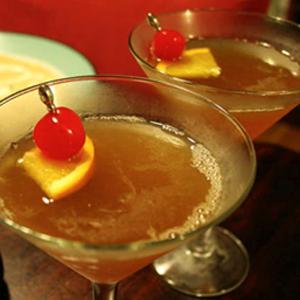
Our country, along with the world giants, also produces vermouth. Among them, “Salvatore” and “Delasi” can be singled out in first place. The first one is produced in Russia, but the brand itself belongs to the Spaniards. The second is entirely an achievement of the Russians. Naturally, it is inferior in taste to the famous Martini or Cinzano. But some are attracted by the affordable price compared to the cost of the “leaders”. In principle, it’s quite good and may well meet fairly high requirements. Don't underestimate Russian winemakers. If we consider Delacy vermouth as the main component for cocktails, what to drink it with and how to drink it, no special questions arise. Like all wines of this kind, it will harmonize perfectly with fruits and juices. Its taste is perfectly emphasized by orange, grapefruit, apple and even peach. A good combination will turn out if you mix “Delasi” with cranberry juice, and you can use a sprig of mint as decoration.
What do you drink Spanish Salvatore with?

On the shelves of our stores you can buy five varieties of Salvatore vermouth: dry, bitter, red, pink and white. Produced in Russia, it is quite affordable and always available. If you bought it with what to drink it with, it will depend on the situation and the type of drink you choose. For example, dry vermouth does not need addition. Simply throw a few pieces of ice into the glass. "Salvatore" white will be good as a mixture with soda water and champagne. You can also prepare an original cocktail from 1 part vermouth, 1 part dry gin and 2 parts; it will be especially tasty if it is cooled to 13-14 degrees. Based on red and pink vermouth, you can prepare strong cocktails with the addition of vodka, juices and sparkling water. "Salvatore" bitter has a very tart taste, so it is best consumed with sweet and varied desserts. In this case, even ice cream will do.
What should you drink vermouth with? What do you drink Bianco vermouth with?
There is no single rule for the consumption of alcoholic beverages. Each of them is individual and has certain properties and qualities unique to it. Take vermouth, for example.
What is vermouth?
This wine is usually fortified, which contains the spicy aroma of various plants. There are legends that they first heard about it back in the 5th century BC. Initially, it was customary to make it from white grape varieties. But subsequently, a method for producing this drink from red and pink varieties was mastered. Depending on the strength, dessert vermouth (16%) and strong vermouth (18%) are distinguished. In addition, vermouths can be divided into sweet and dry. It all depends on the production method. Moreover, dry varieties are usually only white, while sweet varieties can also be red. Many medicinal plants are added to this wine as aromatic impurities, which make it a real tonic and restorative. The main additional component of vermouth is wormwood. Its percentage in the composition of the flavor of plant origin reaches 50%. The remaining ingredients, in descending order, include yarrow, mint, cinnamon, black elderberry, nutmeg, St. John's wort, tansy, rosemary and many others. In total, several dozen herbs are used in the production of vermouth. Having an idea of the composition, you can really think about what to drink vermouth with?
Basic drinking rules
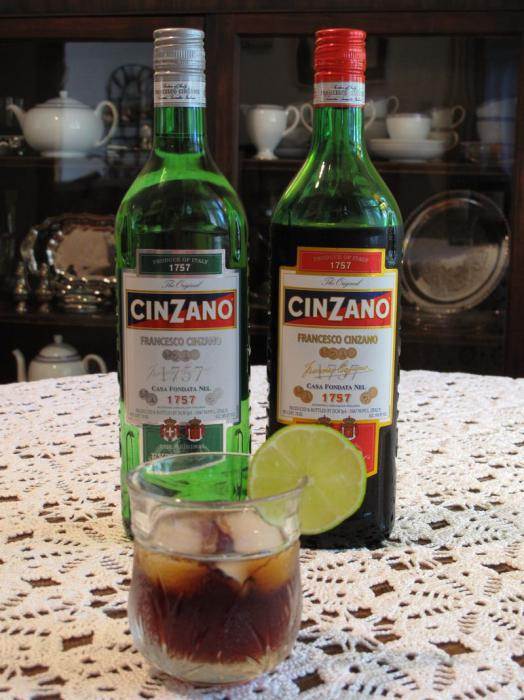
Before answering this question, it is necessary to clarify how this wine should be drunk. Vermouth is usually drunk from a special whiskey glass or triangular cocktail glass. It is customary to take the drink in small sips, slowly savoring it. This method of consumption allows you to prolong the pleasure and stretch out the time of enjoying the extraordinary taste. This drink is perfect for a good conversation in a pleasant company. Now you can think about what to drink vermouth with. Many people prefer to drink this wine in its pure form. This way the aroma is felt better, you can feel the taste of each component. The astringency of some herbs and the tenderness of others together create a unique harmony of taste. But there are people who answer the question “what to drink vermouth with” differently. Some people prefer to add a little lemon juice or a small slice of orange to the glass. This drink helps improve appetite. This may be why it is usually drunk before or during meals. There is another fairly common option for what to drink vermouth with. This wine goes well with strong alcoholic drinks: vodka, gin or cognac. As a result of mixing, the aroma of the wine becomes even brighter, and the cocktail acquires a rich, rich taste. It is better to snack on this drink with fresh fruit, cheese or roasted nuts.
How to drink "Bianco"
All vermouths are divided into five categories:
- dry (“Secco”) with a sugar content of no more than 4%;
- white (“Bianco”), which contains 10-15% sugar;
- red (“Rosso”), where sugar is more than 15%;
- pink (“Rose”), which contains sugar in the same amount as red and white;
- bitter (“Bitter”).
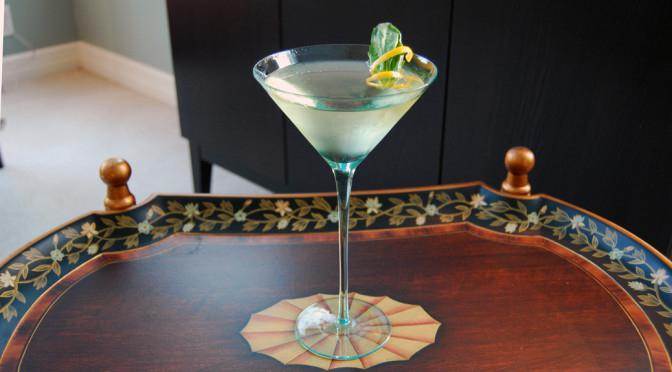 France and Italy are considered the main producers of vermouth in the world. Among Italian vermouths in our country, the most famous is Martini. It comes in nine different types. More delicate and aromatic, perhaps, is Martini Bianco. It is very popular, and bartenders often use it to prepare various cocktails. So, what do you drink Bianco vermouth with? There are several answers to this question. It all depends on the occasion, mood and taste preferences. Mainly used as additional ingredients:
France and Italy are considered the main producers of vermouth in the world. Among Italian vermouths in our country, the most famous is Martini. It comes in nine different types. More delicate and aromatic, perhaps, is Martini Bianco. It is very popular, and bartenders often use it to prepare various cocktails. So, what do you drink Bianco vermouth with? There are several answers to this question. It all depends on the occasion, mood and taste preferences. Mainly used as additional ingredients:
- A slice of lemon. It is simply placed in a glass of drink.
- Various fruits and berries. In this case, the drink must be cooled with pieces of ice.
- Juices (grapefruit or cherry are suitable). They help to better reveal the taste of the wine.
- Strong drinks such as gin, vodka or cognac. In this case, a little liquor is added to the mixture so that the alcohol does not spoil the overall taste.
This is not a complete list of what Bianco vermouth is drunk with. There are dozens of ways from which you can choose the one you like the most.
Domestic drink options

Our country, along with the world giants, also produces vermouth. Among them, “Salvatore” and “Delasi” can be singled out in first place. The first one is produced in Russia, but the brand itself belongs to the Spaniards. The second is entirely an achievement of the Russians. Naturally, it is inferior in taste to the famous Martini or Cinzano. But some are attracted by the affordable price compared to the cost of the “leaders”. In principle, Delacy vermouth is quite good and may well meet fairly high requirements. Don't underestimate Russian winemakers. If we consider Delacy vermouth as the main component for cocktails, what to drink it with and how to drink it, no special questions arise. Like all wines of this kind, it will harmonize perfectly with fruits and juices. Its taste is perfectly emphasized by orange, grapefruit, apple and even peach. A good combination will turn out if you mix “Delasi” with cranberry juice, and you can use a sprig of mint as decoration.
What do you drink Spanish Salvatore with?

On the shelves of our stores you can buy five varieties of Salvatore vermouth: dry, bitter, red, pink and white. Produced in Russia, it is quite affordable and always available. If you bought Salvatore vermouth, what to drink it with will depend on the situation and the type of drink you choose. For example, dry vermouth does not need addition. Simply throw a few pieces of ice into the glass. "Salvatore" white will be good as a mixture with soda water and champagne. You can also prepare an original cocktail from 1 part vermouth, 1 part dry gin and 2 parts Sprite. The drink will be especially tasty if it is cooled to 13-14 degrees. Based on red and pink vermouth, you can prepare strong cocktails with the addition of vodka, juices and sparkling water. "Salvatore" bitter has a very tart taste, so it is best consumed with sweet carbonated drinks and a variety of desserts. In this case, even ice cream will do.
More information
Vermouth - or wormwood wine - is a wine-based aperitif to which alcohol, sometimes sugar is added and which is flavored with various spices. Vermouth can only be based on white wine.
Sweet vermouths can be white or red. The color change depends on the amount of color added and can be straw yellow, golden or brown. White sweet vermouth has more delicate taste with a slight bitterness.
Red sweet vermouths have a more intense aroma and a pronounced vermouth-like taste.
Dry vermouths are produced exclusively in white. They are lighter than sweet and have a strongly pronounced bitterness in taste.
Gentleman's drink - vermouth- came to us from abroad, and was unknown for a long time. The most popular Western brands in Russia have not attracted anyone for many decades. Russians became interested in this drink only after watching Italian films where the characters drank vermouth. This is how this flavored wine came into fashion in the Soviet Union. They began to order it abroad and produce it themselves; vermouth gradually became the main decoration of the table. Even empty bottles were not thrown away, but were carefully stored in the bar and shown to guests as a source of pride.
However, let's go back a few centuries and see where and when the history of vermouth began.
Vermouths have been known since ancient times - they were not just drunk, they were also used for treatment.
If you look into an old Austrian reference book, you can find the translation of the word “vermouth” - wormwood. Indeed, the main component of vermouth is wormwood herb. The first wormwood drinks appeared in Ancient Greece and Ancient Rome. According to one version, the prototype of vermouth was invented by Hippocrates, who came up with the idea of adding regular wine fragrant, spices. This gave the drink not only pleasant taste, but also healing properties. According to legend, the aromas of a summer meadow and ripening grapes inspired the great healer to create a drink with a tonic effect.
In the Middle Ages, this drink was supplied to the court of the King of Bavaria. It is to the King of Bavaria - a fan of this drink - that we now owe this name - Wermut (wormwood),
In addition to wormwood, good vermouths contain dozens of different herbs: yarrow - 18%, mint - 10%, cinnamon - 10%, cardamom - 8%, black elderberry - 6%, nutmeg - 5%, and in total when making vermouths it can up to several dozen aromatic and spicy plants can be used. Among them: elecampane, yellow sweet clover, oregano, angelica, St. John's wort, ginger, coriander, lemon balm, mint, chamomile, etc. These components enrich with notes of their aroma and taste. grape wine, and the result is a fragrant and tart drink, in which pleasant bitterness is harmoniously combined with varying degrees of sweetness.
In its familiar form, vermouth was discovered by the young inventor Antonio Benedeto Carrpano, in Italy, in the area of Turin.
Turin is surrounded by fertile plains where amazing grapes grew, from which wonderful Muscats were made. Aromatic, spicy herbs grew nearby on the alpine slopes. The combination of these components gave an extraordinary, subtle, original taste and aroma. Later, Muscats were replaced with more neutral, dry wines, and berries and fruits were added to the spices. Only wormwood extract remained unchanged.
A little later, for greater sophistication, they began to add not only wormwood to the drink, but also coriander fruits and lemon peel, and they tried to make the wine itself neutral so that it did not interrupt the aromas of the herbs. In this form, the drink has reached our time. At the end of the 18th century, the largest vermouth manufacturing companies were founded in Turin.
It must be said that the production of vermouth is not as simple as it might seem at first glance.
There are two large groups of vermouths:
Italian, produced in the area of the city of Turin. They are quite soft, their color varies from red to gold.
French, made from dry white wines of certain grape varieties. They are golden in color and usually have a dry or very dry taste.
The essence of vermouth has undergone almost no changes over the two and a half millennia of its existence. But the exact proportion between plants, wine, alcohol and sugar is still strictly guarded by the masters; the recipe for spices added to wine and giving vermouth a balanced bitterness and sweetness at the same time is kept in strict confidence. It is these secret developments that determine the taste of the drink and constitute the main secret of its production. Distinctive feature vermouth - the presence of wormwood tones in the bouquet, and bitterness in the taste.
Skillful use of the characteristics of plant raw materials allows manufacturers to obtain compositions that differ in taste and aroma. Thus, not only wormwood and cinchona bark, but also oakberry, tansy, and horehound give vermouth its characteristic bitterness. Elderberry blossom with the addition of coriander fruit and lemon peel can develop a strong nutmeg tone. Immortelle, rosemary, juniper berry, and St. John's wort will add resinous shades to the wine. Melissa, catnip, lemon wormwood will fill the bouquet with the fragrance of citrus fruits.
In order to reconcile such different representatives of the flora, winemakers add small quantities infusions of chamomile, orris root and cloves. It is believed that they are able to combine the entire complex of aromas. And the combination of vanilla extract, cardamom, calamus strengthens it.
Unlike sweet vermouths, dry ones are thinner and more delicate, with less plant extracts. Therefore, their taste and aroma are not so pronounced and have a specific shade.
Nowadays, wine materials used for flavored drinks can be made from white, rosé and red grape varieties.
An extract or infusion of plant materials is added to a specially prepared wine base, which accounts for 80% of the total volume of the product, sugar syrup, pure alcohol, and for red vermouths also caramel. Sugar smoothes out the excessive bitterness of the extract, gives the wine the necessary sweetness and promotes maximum penetration of aromatic substances into the wine.
Alcohol provides the best solubility and preservation. Infusions of spicy and aromatic plant materials are also obtained on the basis of alcohol. The herbs selected for the extract are dried, crushed, and then infused in a wine-alcohol solution in large rotating vats. This process lasts from two to three weeks.
After mixing, the vermouth is treated with cold, filtered and sent to rest. The time from processing to bottling vermouth can last from two months to one year. The resulting vermouth is pasteurized. Heat treatment slightly reduces the intensity of the aroma, but improves the taste of the wine and gives it greater maturity.
Depending on the strength and taste qualities, wormwood wine can be of several types.
The traditional classification of vermouth contains the following items: secco (dry) - dry vermouth with a sugar content of about 4%; bianco - white vermouth with a sugar content of 10 to 15%, rosso (sweet) - red vermouth, with a sugar content of more than 15%, rose - pink vermouth with a sugar content of about 13-16%. These vermouths are good in cocktails and chilled as an aperitif. Vermouth marked bitter or extra dry contains minimal amount sugar, about 2.5 - 2.8%, but - the maximum amount of alcohol, 18% versus the usual 16%. It is more suitable for desserts or as a digestif.
But each individual brand may have its own, more complex classification. Thus, one of the most popular vermouth manufacturers, whose name has already become a household name for vermouth in general, Martini, distinguishes, in addition to the 5 described above, also the types D "Oro, Fiero and Extra Dry. The second most famous Italian manufacturer, Chinzano, produces, in addition to the basic Bianco, Rosso, Rose and Extra Dry, orange vermouth Orancio and lemon Limetto.
As a rule, the more delicate and lighter the vermouth, the more simple manipulations it requires when drinking: water, ice or lemon will be enough. This is exactly how professional tasters use vermouth, believing that diluted vermouth reveals its aroma and taste more fully. On the contrary, the richer and brighter the wormwood wine, the more effective it is in cocktails - in a simple mixture with tonic or fruit juice, and complex, layered, multicomponent mixtures. The total number of cocktails with vermouth known to bartenders is close to five hundred.
The main Italian producers of vermouth are the companies Bacardi-Martini, Campari, Cinzano.
In France, popular vermouths are Noilly Prat, Bussot and French vermouth Picon, which was used to “color the water” by the gluttonous Muscovites in Gilyarovsky’s famous story.
Dry vermouth is also produced in the USA - it is much less spicy than European vermouth.
To choose a good vermouth, you need to know about the most famous brands of this drink, let's highlight some from the general list...
Barbero, a drink from Turin, is considered a classic vermouth; its production was founded in 1831. The secret of the recipe is traditionally kept secret and passed down from father to son. This wormwood wine contains more than 40 different herbs and spices, giving it an inimitable taste.
Another vermouth that has worldwide fame is Cinzano. It was originally made by a family from Turin, but the brand has now been bought by the Campari group. Cinzano has been famous since 1757 and produces white, red and dry vermouth.
But the most widespread and recognized in Russia is Martini vermouth, named after the Martini & Rossi plant in Turin. The founders of the company invented their own recipe based on selected wine white grapes. Its taste is rich in thirty types of herbs, bark, fruits, seeds and flowers. The drink has won more than 40 medals, and more than 200 million bottles have been sold every year for several centuries.
Let's take a closer look at this famous vermouth and give its types, what it comes in...
Martini & Rossi (Martini and Rossi) - vermouth from Turin.
Martini Bianco:
Manufacturer: Martini & Rossi S.P.A., Italy. Strength 16% Sugar content 1.6% It has a mild aroma with a slight hint of vanilla and spice. You can drink it with ice, a slice of lemon, or juice. Lovers of sweet and at the same time refined cocktails prefer Martini Bianco with soda, tonic or lemonade.
Martini Rose:
Manufacturer: Martini & Rossi S.P.A., Italy. Strength 16% Sugar content 1.6% A peculiar, tonic drink of a pleasant pink color. Carefully selected wine varieties create a delicate and surprisingly persistent bouquet. The taste of the drink is characterized by a hint of clove.
Martini Rosso:
Manufacturer: Martini & Rossi S.P.A. Italy. Strength 16% Sugar content 1.6% It has a sweet and, at the same time, slightly bitter taste; rich aroma. It owes its virtues to the successful combination of wines and carefully collected herbs. Recommended to drink with ice, lemon or juice.
Martini Extra Dry:
Manufacturer: Martini & Rossi S.P.A., Italy. Strength 18% Sugar content 0.25% Martini Extra Dry is truly famous unique taste. Contains little sugar and has a relatively high strength. Martini Extra Dry is best consumed in its pure form. However, the properties of the drink make it an excellent base for cocktails, including exotic ones.
However, as with everything else, it may not be worth chasing brands, which are often unreasonably expensive.
Currently, there are more and more ratings from connoisseurs in favor of other vermouths. There are many vermouths that are certainly made in Italy, but the price is much cheaper than Martini, for example Gran Torino or Santa Orsola - the taste is practically no different from the Martini brand, but the price is pleasing.
Recent issues of the wine magazine “Distillator” announced the voting results: SANTA ORSOLA vermouth was recognized as the best, along with Martini!
Also, it would be interesting to listen to the opinions of experts on domestic vermouths or the current “Bouquet of Moldova” on our blog.
How to drink vermouth?
Vermouths are drunk neat or in cocktails.
In their pure form they are consumed as an aperitif, chilled or with ice. Add a few drops of lemon and a slice of orange to the vermouth. They have a very pronounced tart, bitter taste, which stimulates appetite, salivation and improves digestion.
Good vermouth not only lifts your spirits, but also stimulates your appetite. Professional tasters prefer to drink it not in pure form, but with water or ice, then the aroma is felt more fully. Vermouth is typically used as a cooling aperitif. And as a snack it is served with fried nuts, salted almonds, and fruits.
But it is worth remembering that vermouths are not table drinks: they are not drunk during meals, but most often before, as an aperitif, or after, for dessert with fruit.
Dry vermouths are best not mixed, not diluted, and consumed chilled.
Sweet vermouths are good both on their own and in combination with strong alcoholic drinks - gin, vodka, cognac. In both cases, it’s a good idea to add a little lemon juice or a slice of orange.
It is customary to drink pure vermouth not from the famous “triangular” glass, which is used exclusively for cocktails, but from a whiskey glass.
Vermouth is one of the most successful ingredients for cocktails. According to experts, up to 500 types of cocktails can be prepared using it.
Vermouth can be classified as an “all day drink” and can be enjoyed over a long period of time by taking small sips.


